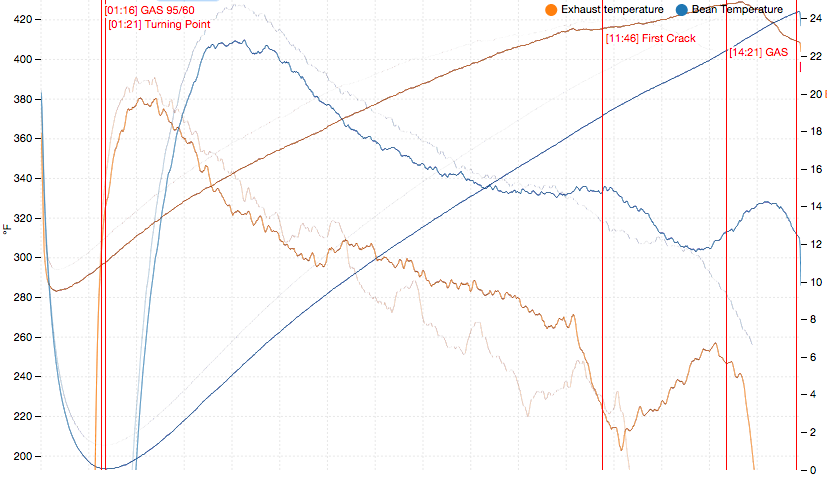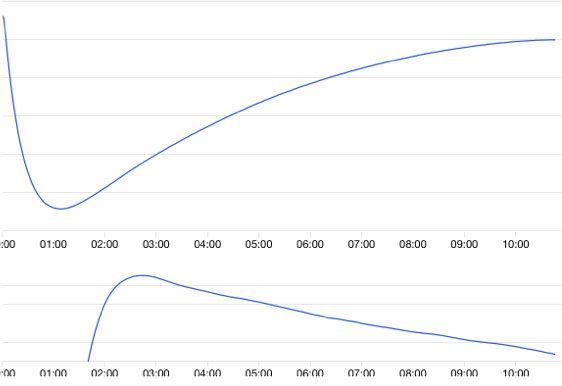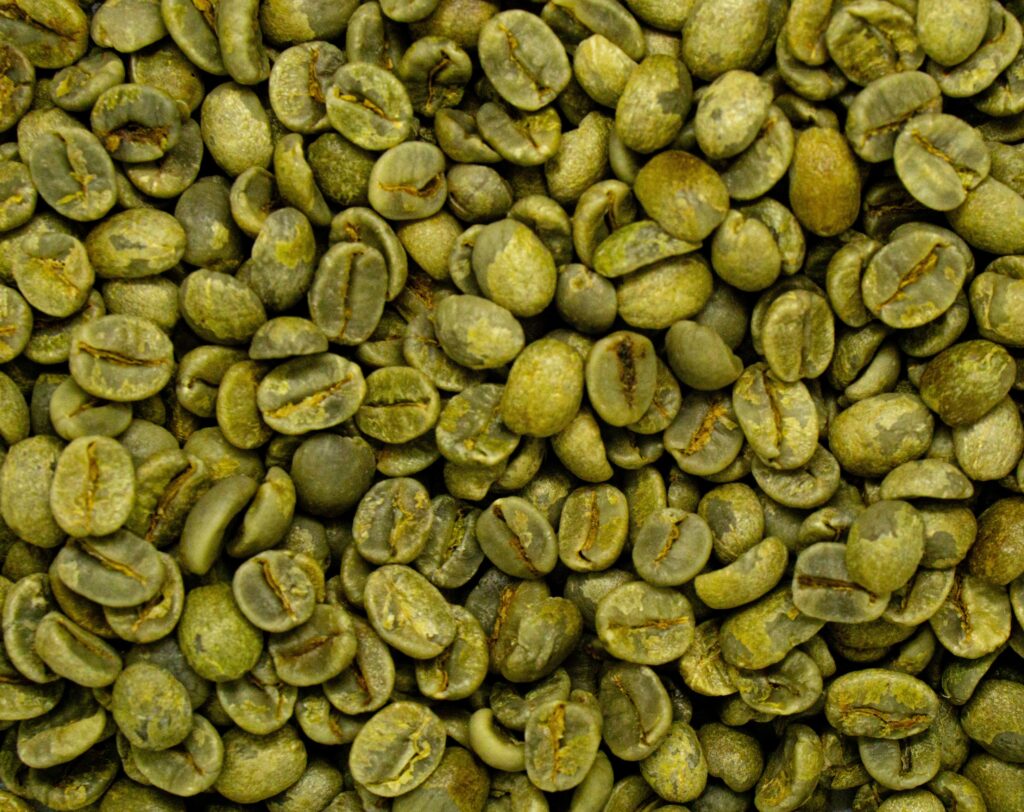The Flick

| Roast
Written by Scott Rao

blue curves = bean temperature and bean-temperature ROR
brown curves = environmental temperature and environmental-temperature ROR
The vast majority of my clients ROR curves have looked like this before I began working with them. Such curves are so common that I’ve begun thinking of them as unmanaged or natural curves.
Compared to similar roasts with smoothly-declining RORs, such unmanaged roasts will offer less delicacy, sweetness, and development, and may taste a little baked. They will often have a hint of char, even at a light roast color.
The flick at the end of the roast causes the charred flavor and loss of delicacy. The flick indicates an acceleration in the bean ROR. Several factors may contribute to a flick, including a crash in the ROR early in first crack, drying of the beans, and overheating of the roasting environment. The most damaging cause is an increase in the roasting drum’s surface temperature. Like the searing of a steak, the hot drum surface will darken only the outermost layers of the beans, contributing to an uneven roast. The beans may not look burnt, but a roast with a flick will usually taste more roasted and less delicate than a similar roast without a flick.
I have measured the color distribution of several ground-coffee samples from similar roasts that differed primarily in whether they flicked at the end. The flicked roasts always produced a greater volume of grounds at the darkest color, with little other difference in the color distributions.
Please do not underestimate the damage imparted by a flick. Many roasters who seem to think the flick is benign have posted flicked ROR curves online, claiming that the curves followed the Rao system (i.e., had a constantly-declining ROR), but, of course, a flick indicates a rising ROR and a violation of the system. I often wonder if roasters have been flicking for so long that they think its inevitable.
The flick may also mislead roasters in their understanding of how development time ratio (DTR) affects coffee flavor. Many roasters have told me that higher DTRs (i.e. 20%-25%) produce roasty flavors (relative to bean color). But there is, in fact, little association between DTR and roastyness; every time one of those roasters showed me their ROR curves from the high-DTR roasts, their RORs contained flicks. The flicks, I believe, not the DTRs, were the causes of the roasted flavors. All of the roasters who were open-minded enough to stick with the higher DTRs while learning to smooth their RORs eventually found the roasted notes disappeared and their coffee was sweeter than it had ever been.
In a typical 10-14 minute drum roast, the flick occurs approximately 90-120 seconds after the onset of first crack. (In the curve shown, the flick occurred exactly two minutes after the beginning of first crack.) Those who roast up to, or just past, the end of first crack rarely have to contend with flicking. However, when roasting darker, one must manage the flick and, if roasting dark enough, a likely crash after the flick.
Cropster offers several features one can use to monitor and avoid flicking:
Users should consider setting Cropster’s rolling-average intervals to no more than 15 seconds, in order to shorten the lag between the real-time ROR reading and its reflection in the ROR curve. One can, of course, instead view the real-time ROR number on the far-right of the screen, but I find it helps to also have the curves values closer to the real-time readings.
I recommend roasters ensure their bean probes do not have too much thermometric lag. Typically smaller-diameter probes read more quickly, with less lag.
Roasters should monitor the environmental-temperature ROR (ET ROR) curve as well. When the ET ROR begins to climb too high, too fast (see the brown curve, between 12:00-13:00 in the graph above), it is usually an early-warning signal that the bean ROR is about to rise, or at least slow its descent. An exception to this is just after first crack begins, something I will discuss in a future post.
A ROR curve doesn’t have to be perfectly linear to create a good roast, but linear ROR curves seem to minimize baked and roasted flavors. The ROR below was well-managed and produced one of the most memorable roasts I’ve ever tasted:


